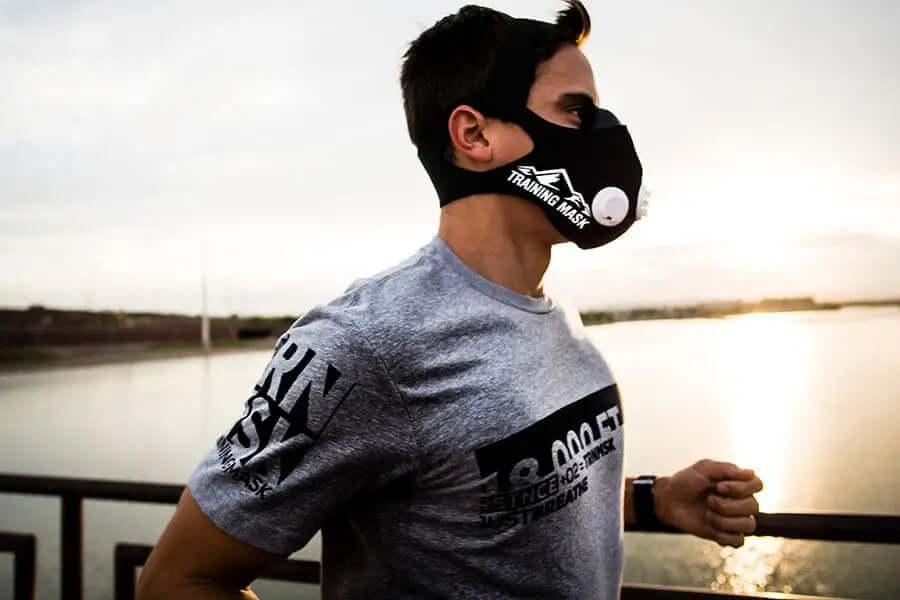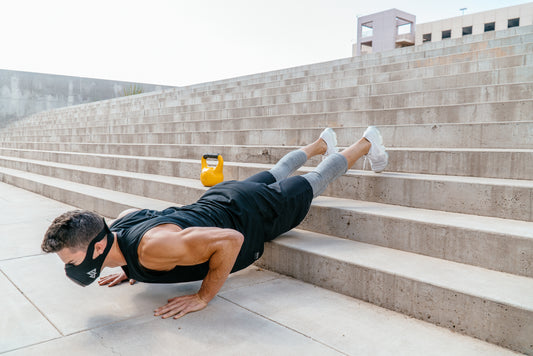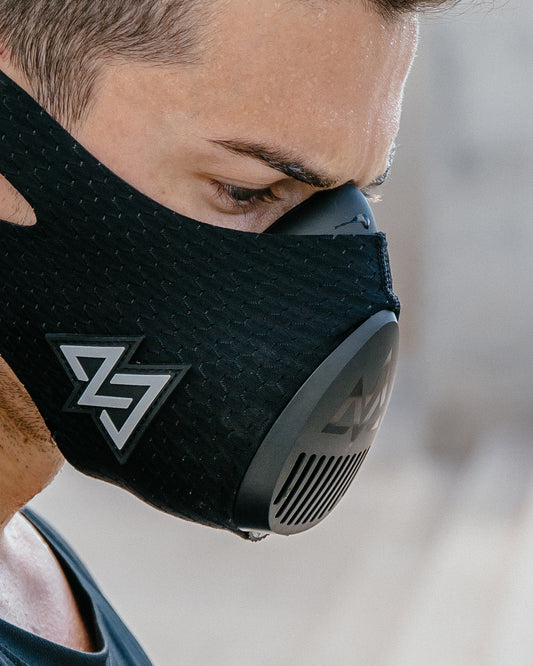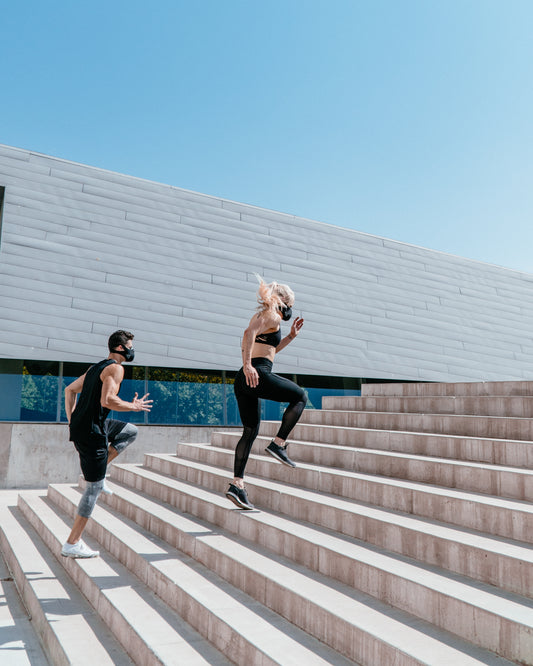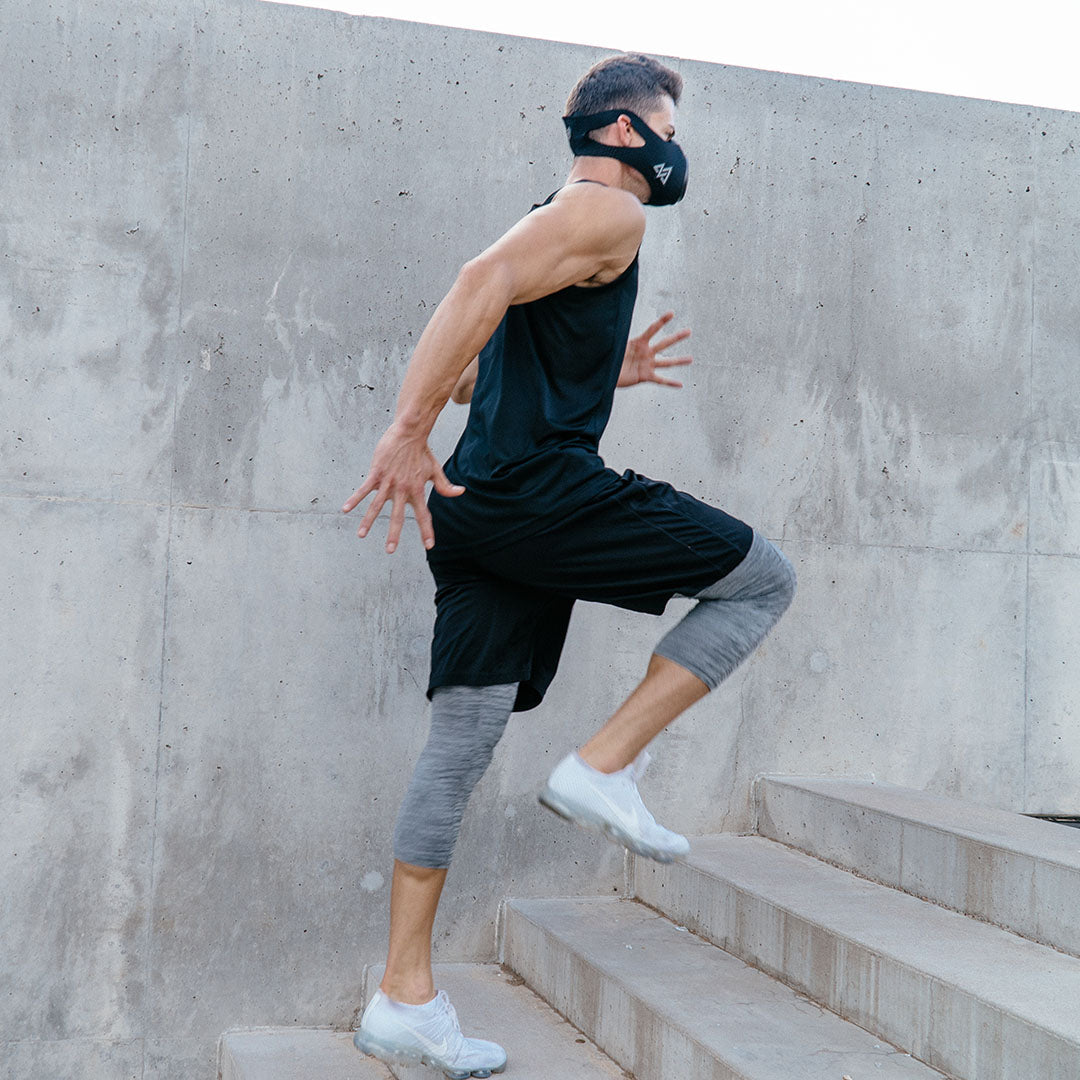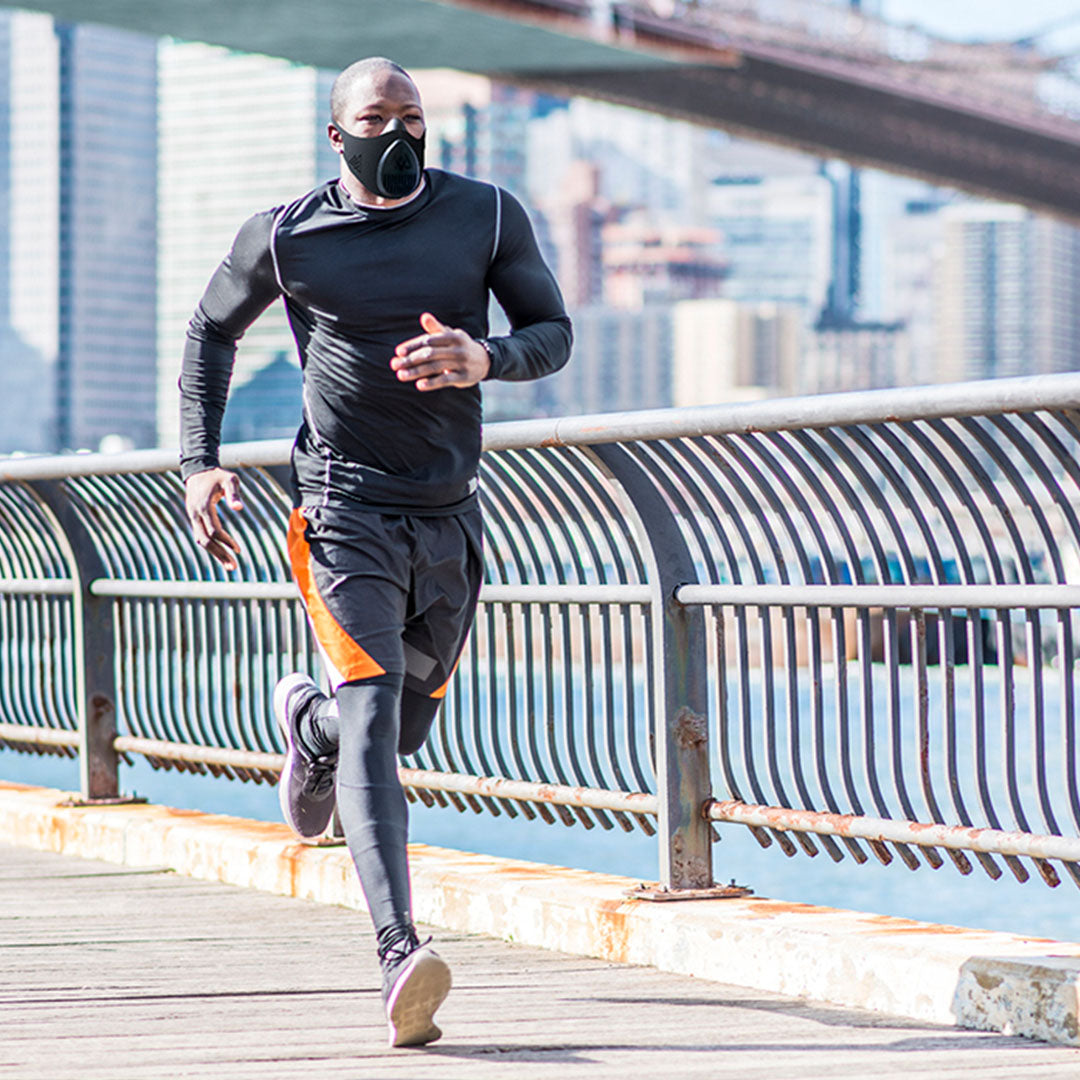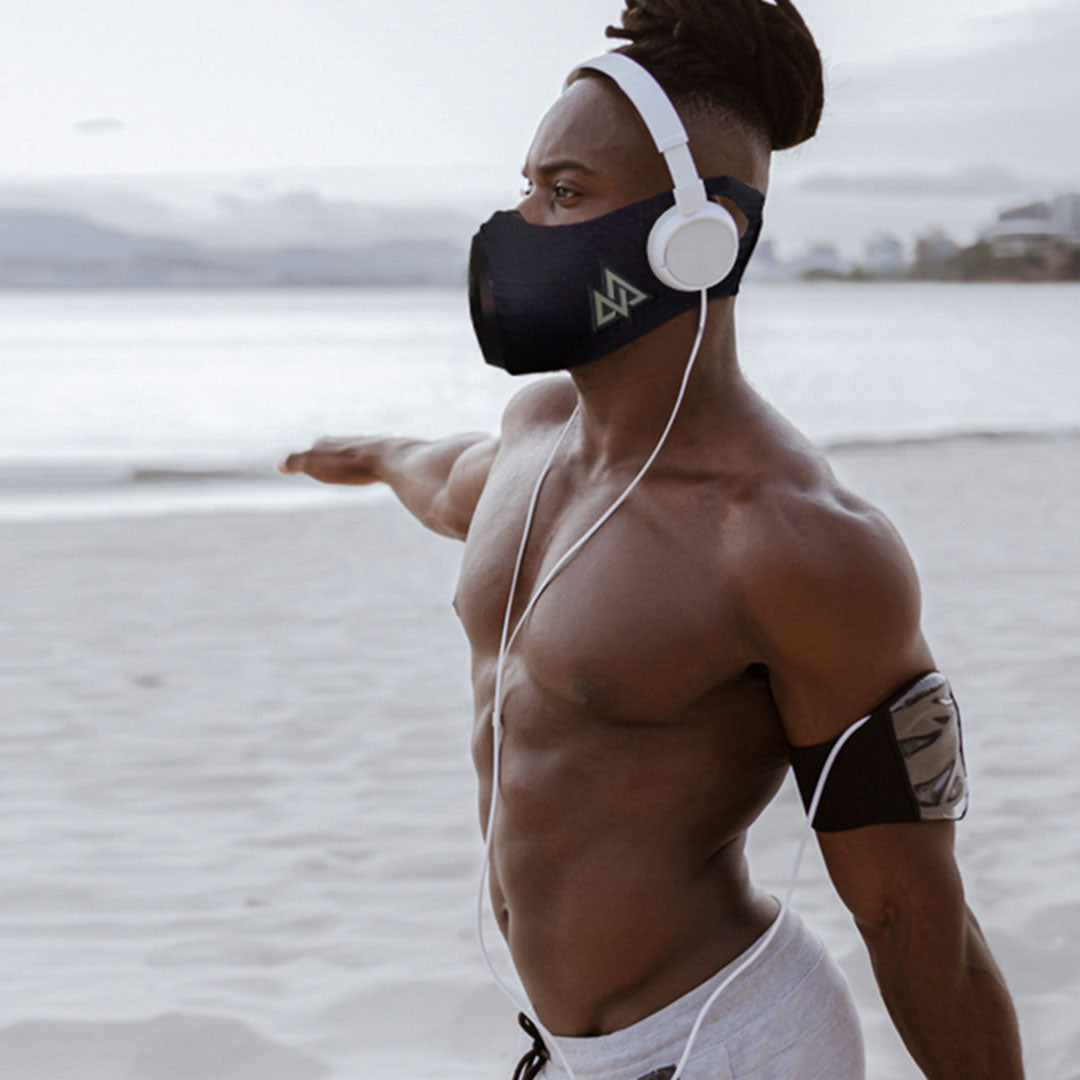International Journal of Applied Science and Technology Vol. 6, No. 2; June 2016
The Effects of Simulated Altitude Training on Aerobic Capacity and Function
Matthew T. Maher, MS, CEP
William Paterson University
Department of Kinesiology
300 Pompton Road, Wayne, NJ 07470
USA
Michael A. Figueroa, Ed.D., CSCS
William Paterson University
Department of Kinesiology
300 Pompton Road, Wayne, NJ 07470
USA
Abstract
This study investigated a 6-week intervention utilizing the Elevation Training Mask (ETM) in conjunction with an Intermittent Hypoxic Training (IHT) protocol to promote a hypoxic condition while still training at sea-level. Participants were randomly assigned into one of two groups; a Training Mask (TM) group and Non-Training Mask (NTM) group. Both groups trained at moderate to high intensity (65%-75% of their heart rate reserve) for 15 minutes, 2 times per week for 6 weeks. A one-way ANOVA was used in order to determine between group differences and a dependent t-test was then used to determine within group differences. The Results of this study showed a significant difference (p< 0.05) in Maximum Voluntary Ventilation (MVV) between the two groups and within the TM group after 6 weeks of training. The results also showed a slight, but not significant, increase in measured VO2 peak and % VO2 peak at anaerobic threshold.
Introduction
Aerobic training is commonly measured by the rate at which oxygen can be used by an individual’s body during peak work. This is known as peak oxygen consumption or VO2 peak and is one of the best methods to predict cardio respiratory endurance and aerobic capacity. VO2 peak is related directly to the maximal capacity of the heart to deliver blood to the muscles (Howley & Franks, 2007). A certain type of training where the oxidative pathways are activated and become strengthened over time is required to improve and/or maintain VO2 peak. As demonstrated in a recent study by Fredowsi et. al. 2011, with an appropriate aerobic training program an improvement and increase in VO2 peak can be achieved. This study, along with several others, found that aerobic exercise had a significant effect on lung function with an enhancement of breathing efficiency, as well as, a decrease in pulmonary resistance (Ferdowsi, Saiiari, Valizadeh, & Gholamie, 2011)(Holm, Sattler, & Fregosi, 2004)(Illi, Held, Frank, & Spengler, 2012) (Morgan, Kohrt, Bates, & Skinner, 1987).
Hypoxia and aerobic exercise are two independent metabolic stressors that induce adaptations of the oxygen supply and utilization at the whole body tissues (Bailey, Davies, & Young, 2001). Due to these reasons, training under hypoxic conditions is widely used to improve athletic aerobic performance, which is linked to peripheral adaptations. During the last 20 years, a number of different methods and techniques have been created to simulate altitude hypoxia or altitude training. These include hypobaric chambers, hypoxic apartments, hypoxic tents, and hypoxic rooms. The premise of these modalities is to provide inspired hypoxia at rest and during exercise. One of the most common methods is intermittent hypoxic training (IHT). IHT refers to the discontinuous use of normobaric or hypobaric hypoxia, in an attempt to reproduce some of these key features of altitude acclimatization, with the ultimate goal to improve sea-level athletic performance (Levine, 2002). IHT is described as when athletes live at or near sea-level but train under hypoxic conditions. IHT is relatively low cost with minimal travel which also does not disrupt the athletes’ normal training environment and/or lifestyle (Faiss, Girard, & Millet, 2013). It is believed that IHT would potentiate greater performance improvements compared to similar training at sea-level with the implementation of hypoxia during aerobic interval training (Levine & Stray-Gundersen, 2006)(Roskamm, Landry, Samek, Schlager, Weidemann, & Reindell, 1969).
A newer product on the market is the hypoxic mask. The most commonly used hypoxic mask is the Elevation Training Mask (ETM).
The ETM provides adjustable resistances during inspiration with a set resistance on expiration to simulate high altitude training. The ETM helps condition the lungs by creating pulmonary resistance and strengthening the diaphragm. The ETM also helps regulate breathing, increase lung stamina, lung capacity, oxygen efficiency and increase overall mental focus (Training Mask: The Science, 2015). There is limited research concerning the aerobic benefits of altitude training at sea-level with the use of an ETM. There is also a scarcity of research using a treadmill as the training modality since most current literature utilized cycle ergometry. The aerobic capacity of altitude training at sea-level in conjunction with an ETM and its influence on health and cardio respiratory fitness is unknown.
Altitude training at sea-level in conjunction with an ETM may be as effective as training at an altitude that improves and maintains cardio respiratory fitness. The purpose of this study was to use the ETM in conjunction with an IHT protocol to promote a hypoxic condition while training aerobically at sea-level on a treadmill. Therefore, the goal of this study was to explore if training in a hypoxic environment at sea-level over 6 weeks can maintain or increase VO2 peak and lung function as compared to training in a normoxic environment. The hypothesis supporting this research was that training with the ETM will have a greater improvement on cardiovascular endurance and function for pre- and post-measures as compared to training without the altitude mask.
Methods
Fifteen undergraduate students were recruited for the study from William Paterson University in Wayne, New Jersey. Participants included active male and female Kinesiology students who are Exercise Science majors and were unfamiliar with using the altitude mask. Prior to the start of testing, participants completed a Par-Q and You Health Questionnaire form in order to ensure pre-participation screening and assess any possible risk factors for exercise training. Only healthy subjects were recruited for participation in this study. Subjects were deemed healthy if there were no risk factors for cardiovascular disease present or reported.
All participants who volunteered to be a part of the study signed an informed consent form which was approved by the Institutional Review Board of the university. Data were collected in the Human Performance Laboratory of William Paterson University. The Bruce Protocol treadmill test was performed on a Quinton TM55 Treadmill which is integrated with the Cardiac Science Quinton Q4500 Stress System (Cardiac Science Corporation ®, Bothell, WA).
Peak VO2 and the pulmonary function tests were performed on the MedGraphics Ultima Metabolic cart (MMC) (MGC Diagnostics Corporation ®, Saint Paul, MN). The pulmonary function tests included forced vital capacity (FVC), slow vital capacity (SVC) and maximal voluntary ventilation (MVV). Prior to each test, the equipment was calibrated as per manufacturer specifications. A 12 lead ECG was used to measure heart rates for each subject during testing. Blood pressure was measured using a standard stethoscope and sphygmomanometer. Rate of perceived exertion (RPE) was also obtained and recorded using a Borg Scale of 6-20. Peak VO2 was determined when at least 2 of the following criteria were attained; 85%HRmax, RER=1.15, oxygen consumption did not increase by 150 ml with a subsequent increase in exercise intensity, or if the subject wanted to end the testing.
Body composition was measured using the skin fold method. For this study, each skin fold site was measured using the Lange Skin Fold Calipers (Beta Technology ®, Santa Cruz, CA). Seven skinfold sites were measured on the right side of the body. These sites included the chest, axilla, subscapular, suprailliac, triceps, abdomen, and thigh. Body density was then calculated using the sum of seven equation and body fat percentage was calculated using the Siri equation. The hip and waist circumference were measured using the Guilick II measuring tape (Country Tech Inc. ®, Gays Mills, WI). From this Waist-to-Hip ratio was then calculated. Height and weight were measured using a Detecto standard weight scale (Detecto ®, Webb City, MO).
Training was performed in the Human Performance Laboratory and the Recreational Center on campus. The participants were randomly divided into two groups; Training Mask and Non-Training Mask. Each group performed a pre-test Bruce Protocol stress test, pulmonary function tests, and anthropometric measures to determine baseline values. The Training Mask group (TM) trained on a treadmill for 15 minutes, 2 times per week for 6 weeks at a pace that elicited a moderate to high intensity sustainable at 65%-75% of their heart rate reserve (HRR). A Polar heart rate monitor and watch (Polar Electro Inc. ®, Lake Success, NY) were used during each training session in order to ensure that the appropriate HR intensities were maintained. The training mask was set at 227 meters (Figure 1). The Non-Training Mask (NTM) group trained using the same protocol, but without use of the ETM. After 6 weeks both groups performed a post-test Bruce Protocol stress test, pulmonary function tests, and body composition measures to determine if any changes occurred.
At the completion of testing, data were organized in Excel 2013 and then imported to SPSS for statistical analysis. Pre- and post-measures of, VO2 peak, % VO2 peak at AT, MVV, FVC, SVC and body composition were analyzed using IBM SPSS ™ software Version 19 (IBM ™, Armonk, NY) to determine differences within and between the two groups. A one-way ANOVA was used in order to determine between group differences. A dependent t-test was then used to determine within group differences. The level of significance for these tests was set at p< 0.05.
Results
Fifteen individuals participated in this study. (N = 15, age = 22.9 ± 1.9 years). Out of the 15 participants: 14 completed the whole 6-week program, while only one subject in the NTM group had to drop out as they were not able to complete the required protocol. The 14 participants who completed the 6-week study performed a total of 14 sessions including pre- and post-measures. As shown in Tables 1 -4, no significant differences were found in any of the variables prior to training. After six weeks of training, however, significant differences were found between pre- and post-MVV measures between groups and within the TM group (p=0.01).
Pre-training measures of MVV between the NTM and TM groups were 43.8 ± 20.7 L・min-1 and 65.8 ± 26.4 L・min-1; respectively. Post-training measures of MVV between NTM and the TM groups were 49.5 ± 10.5 L・min-1 and 101.3 ± 40.3 L・min-1; respectively. The increases in MVV for the TM group were found to be significantly different post-training (p = 0.01).
Discussion
The current study focused on a healthy college-aged subject population and used a 6-week aerobic training program with an Elevation Training Mask (ETM) on a treadmill to investigate if the device offers an advantage that is greater than training without one. A one-way ANOVA revealed no significant difference in pre- or post-measures of VO2 peak, %VO2 peak at anaerobic threshold, FVC, SVC, body fat percentage, or waist-to-hip ratio between the two groups (Tables 2, 3, 4). Although there were no significant differences within the groups, the trend in the data revealed an increase in VO2 peak and %VO2 peak at anaerobic threshold values after the training period.
The data showed a slight increase of 2.4 ml・kg-1・min-1 in VO2 peak from pre-measure (32.7 ± 6.5 ml・kg-1・min-1) to post-measure (35.1 ± 5.1 ml・kg-1・min-1) for the NTM group. Percentage of VO2 peak at anaerobic threshold also increased slightly from pre- to post-measures in both groups as well. The NTM group slightly increased by 5.3, while the TM group only increased by 0.9 (Table 2). A greater sample size, an increase in stimulated altitude or longer duration performing the specific training program may have demonstrated significant differences between and within the two groups.
The one-way ANOVA also revealed there was a significant difference (p = 0.01) between pre- and post-MVV between the two groups. The data showed that there was a non-significant difference of 22 L・min-1 in pre-measure MVV between the NTM group (43.8 ± 20.7 L・min-1) and the TM group (65.8 ± 26.4 L・min-1). There was, however, a 51.8 L・min-1 difference in post-measure MVV between the NTM group (49.5 ± 10.5 L・min-1) and the TM group (101.3 ± 40.3 L・min-1). A dependent t-test was then performed and revealed a significant difference (p = 0.01) in pre-and post-MVV within the TM group. The data showed that there was a 35.5 L・min-1 difference in pre-measure MVV (65.8 ± 26.4 L・min-1) and post-measure MVV (101.3 ± 40.3 L・min-1) within the TM group (Table 6).
Since the TM group was wearing the ETM while performing the 6-week exercise program, a resistance was provided during inspiration. The resistance was set on expiration in order to simulate altitude training at 227 m. MVV is defined as the largest possible volume of air that can be breathed in and out of the lungs during in a 12
second period with voluntary effort. MVV can be disassociated with how much gas the lungs can exchange, but be associated with how much air can be moved in and out. The significant difference of the MVV values found within the TM group provides evidence that the ETM does in fact help condition the lungs by creating a pulmonary resistance, better known as respiratory muscle training, while increasing aerobic function.
The ETM may also be considered a respiratory muscle trainer along with a simulated altitude trainer. This is due to the fact the ETM causes a strengthening of the respiratory muscles which helps facilitate the increased ventilation needed to sustain blood oxygenation during exercise (Boutellier, Baechel, Kudent, & Piwko, 1992). The respiratory muscles that are being strengthen in conjunction with the ETM include the diaphragm, external and internal intercostals, scalenes and abdominal muscles. During physical exertion, as these muscles become fatigued, breathing capacity and performance can become hindered. An athlete can, therefore, improve performance and decrease time to fatigue by training these muscles, similar to any other skeletal muscles with the use of the ETM. Research also suggests that inspiratory muscles, like all other skeletal muscles, adapt according to the stress placed on them (Boutellier, Baechel, Kudent, & Piwko, 1992). Since the ETM is able to be adjusted between 77 – 457 meters, an individual can vary a set resistance and thereby strengthen the respiratory musculature.
Morgan, Khort, Bates et al. (1987) concluded that respiratory muscle training significantly improved performance in maximum ventilatory power and breathing endurance, while also showing no significant differences in VO2 peak (Morgan, Kohrt, Bates, & Skinner, 1987). Previous work has demonstrated that respiratory muscle training such as constant load tests, time trials and intermittent incremental tests can be used to improve exercise performance in healthy individuals. (Illi, Held, Frank, & Spengler, 2012)(Morgan, Kohrt, Bates, & Skinner, 1987) (Williams, Wongsathikun, Boon, & Acevedo, 2002). The uniqueness of the current study is that it utilized a treadmill as a training modality as compared to previous work which used cycle ergometry (Bailey, Castell, Newsholme, & Davies, 2000)(Bailey, Davies, & Young, 2001) (Dufour, et al., 2006) (Emonson, Aminuddin, Wight, Scroop, & Gore, 1997) (Faiss, Girard, & Millet, 2013) (Foster, Knapp, Pollock, Rod, & Schmidt, 1987) (Geiser, Vogt, Billeter, Zuleger, Belforti, & Hoppeler, 2001) (Katayama, Sato, Ishida, Mori, & Miyamura, 1998) (Roskamm, Landry, Samek, Schlager, Weidemann, & Reindell, 1969) (Terrados, Melichna, Sylven, Jansson, & Kaijseret, 1988).
Conclusion
Significant differences were found in post-measures of MVV between the two groups and within the ETM group. Although significant differences were not found in VO2 peak and %VO2 peak at anaerobic threshold, a trend in the data revealed an increase in both after several weeks of training. A new training method to increase aerobic capacity and function incorporates the use of a hypoxic mask. The use of a hypoxic training mask has become a popular modality to increase aerobic capacity and function. The ETM provides adjustable resistances during inspiration with a set resistance on expiration to simulate high altitude training.
However, as demonstrated by the results of this study, the ETM can be considered a respiratory muscle trainer as well as a simulated altitude trainer. This is due to the fact the ETM causes a strengthening of the respiratory muscles which helps facilitate the increased ventilation needed to sustain blood oxygenation during exercise. Furthermore, an athlete training aerobically with an ETM can improve performance and decrease time to fatigue by training the respiratory muscles, similar to any other skeletal muscles. Since the ETM allows the person using the device to change resistances, respiratory muscles can be strengthened accordingly while also allowing the athlete’s lungs to use oxygen more efficiently while training aerobically.
Acknowledgements
The researchers would like to thank the Training Mask, LLC ® for providing the Elevation Training Masks to perform this study. No conflicts of interest were associated with the authors and the results of this research.
TABLES
Table 1: Pre- and post-anthropometric data for both groups
|
Group
Non Mask Pre |
N
7 |
Age (yrs) 23.8 ± 2.7 |
p
Ns |
Height (m)
1.6 ± 0.1 |
p
Ns |
Weight (kg)
74.1 ± 10.6 |
p
Ns |
| Non Mask Post | 6 | 24.7 ± 2.9 | Ns | 1.6 ± 0.1 | Ns | 73.5 ± 10.6 | Ns |
| Mask Pre | 8 | 22 ± 1.1 | Ns | 1.6 ± 0.1 | Ns | 73.7 ± 12.2 | Ns |
| Mask Post | 8 | 22 ± 1.1 | Ns | 1.6 ± 0.1 | Ns | 74.8 ± 11.5 | Ns |
Ns = No significant differences between groups
Table 2: Pre- and post-measures of absolute VO2 peak, relative VO2 peak and %VO2 peak @ AT between
both groups
Group N VO(L・2 minpeak-1 ) p VO(ml・2 peakkg-1・ min-1) p %VO2 @ AT p
Non Mask Pre 7 2.4 ± 0.5 Ns 32.7 ± 6.5 Ns 71.5 ± 12.3 Ns
Non Mask Post 6 2.5 ± 0.3 Ns 35.1 ± 5.1 Ns 76.8 ± 2.9 Ns
Mask Pre 8 2.6 ± 0.3 Ns 35.7 ± 5.7 Ns 77.8 ± 6.5 Ns
Mask Post 8 2.5 ± 0.4 Ns 33.4 ± 4.2 Ns 78.7 ± 6.3 Ns
Ns = No significant differences between groups
Table 3: Pre- and post-measures of FVC, SVC and MVV between both groups
Group N FVC (L・min-1) p SVC (L・min-1) p MVV (L・min-1) p
Non Mask Pre 7 4.1 ± 1.4 Ns 4.1 ± 1.4 Ns 43.8 ± 20.7 Ns
Non Mask Post 6 3.5 ± 0.6 Ns 3.2 ± 1.2 Ns 49.5 ± 10.5 * 0.01
Mask Pre 8 4.6 ± 1.3 Ns 4.2 ± 0.5 Ns 65.8 ± 26.4 Ns
Mask Post 8 4.5 ± 1.1 Ns 4.3 ± 1.1 Ns 101.3 ± 40.3 *+ 0.01
+ Significant difference within groups, (p = 0.001)
* Significant difference between groups, (p = 0.01) Ns = No significant differences between groups
Table 4: Pre- and post-measures of Body Fat and W:H ratio between both groups
![]()
| Group | N | Body Fat (%) | p | W:H Ratio (cm) | p |
| Non Mask Pre | 7 | 20.3 ± 7.8 | Ns | 0.8 ± 0.1 | Ns |
| Non Mask Post | 6 | 22.4 ± 8.1 | Ns | 0.8 ± 0.1 | Ns |
| Mask Pre | 8 | 19.2 ± 7.8 | Ns | 0.8 ± 0.1 | Ns |
| Mask Post | 8 | 21.1 ± 7.7 | Ns | 0.7 ± 0.1 | Ns |
Ns = Non-significant
References
Bailey, D. M., Castell, L. M., Newsholme, E. A., & Davies, B. (2000). Continuous and intermitent exposure to the hypoxia of altitude: implications for glutamine metabolism and exercise performance. British Journal of Sports Medicine, 34, 210-212.
Bailey, D. M., Davies, B., & Young, I. S. (2001). Intermittent hypoxic training: implications for lipid peroxidation induced by acute normoxic exercise in active men. Clinical Science, 465/475.
Boutellier, U., Baechel, R., Kudent, A., & Piwko, R. (1992). The respiratory system as an exercise limiting factor in normal trained subjects. European Journal of Applied Physiology, 347-353.
Dufour, S. P., Ponsot, E., Zoll, J., Doutreleau, S., Lonsdorfer-Wolf, E., Genv, B., et al. (2006). Exercise training in normobaric hypoxia in endurance runners. I. Improvements in aerobic performance capacity. Journal of Applied Physiology, 100, 1238-1248.
Emonson, D. L., Aminuddin, A. H., Wight, R. L., Scroop, G. C., & Gore, C. J. (1997). Training-induced increases in sea level VO2max and endurance are not enhanced by acute hypobaric exposure. European Journal of Applied Physiology and Occupational Physiology, 76 (1), 8-12.
Faiss, R., Girard, O., & Millet, G. P. (2013). Advanced hypoxic training in team sports: from intermittent hypoxic training to repeated sprint training in hypoxia. British Journal of Sports Medicine, 45-50.
Ferdowsi, M. H., Saiiari, A., Valizadeh, R., & Gholamie, A. (2011). The effect of eight week aerobic exercise on airway trachea indexes and VO2 max level in overweight male students of Ahvaz Payam Noor University. Procedia Social and Behavioral Sciences, 2848-2852.
Foster, C., Knapp, D., Pollock, M. L., Rod, J. L., & Schmidt, D. H. (1987). Effect of age and training on aerobic capacity and body composition of master athletes. Journal of Applied Physiology, 62 (2), 725-731.
Geiser, J., Vogt, M., Billeter, R., Zuleger, C., Belforti, F., & Hoppeler, H. (2001). Training high - living low: changes of aerobic performance and muscle structure with training at simulated altitude. International Journal of Sports Medicine, 22, 579-585.
Holm, P., Sattler, A., & Fregosi, R. F. (2004). Endurance training of respiratory muscles improves cycling performance in fit young cyclists. BMC Physiology, 9, 1-14.
Howley, E. T., & Franks, D. B. (2007). Fitness Professionals Handbook 5th ed. Champaign: Human Kinetics.
Illi, S. K., Held, U., Frank, I., & Spengler, C. C. (2012). Effect of respiratory muscle training on exercise performance in healthy individuals a systematic review and meta-analysis. Sports Medicine , 707-724.
Katayama, B., Sato, Y., Ishida, K., Mori, S., & Miyamura, M. (1998). The effects of intermittent exposure to hypoxia during endurance exercise training on the ventilatory responses to hypoxia and hypercapnia in humans. European Journal of Applied Physiology and Occupational Physiology, 78, 189-194.
Levine, B. D. (2002). Intermittent hypoxic training: fact and fancy. High Altitude Medicine and Biology , 177193.
Levine, B. D., & Stray-Gundersen, J. (2006). Dose-response of altitude training: how much altitude is enough? Advances in Experimental Medicine and Biology, 233-247.
Morgan, D. W., Kohrt, W. M., Bates, B. J., & Skinner, J. S. (1987). Effects of respiratory muscle endurance training on ventilatory and endurance performance of moderately trained cyclists. International Journal of Sports Medicine, 88-93.
Roskamm, H., Landry, F., Samek, L., Schlager, M., Weidemann, H., & Reindell, H. (1969). Effects of a standardized ergometer training program at three different altitudes. Journal of Applied Physiology, 27, 840-847.
Terrados, N., Melichna, J., Sylven, C., Jansson, E., & Kaijseret, L. (1988). Effects of training at simulated altitude on performance and muscle metabolic capaicity in competitive road cyclists. European Journal of Applied Physiology and Occupational Physiology, 57, 203-209.
Training Mask: The Science. (2015, September 16)
Williams, J. S., Wongsathikun, J., Boon, S. M., & Acevedo, E. O. (2002). Inspiratory muscle training fails to improve endurance capacity in athletes. Medicine and Science in Sports and Exercise, 1194-1198.

